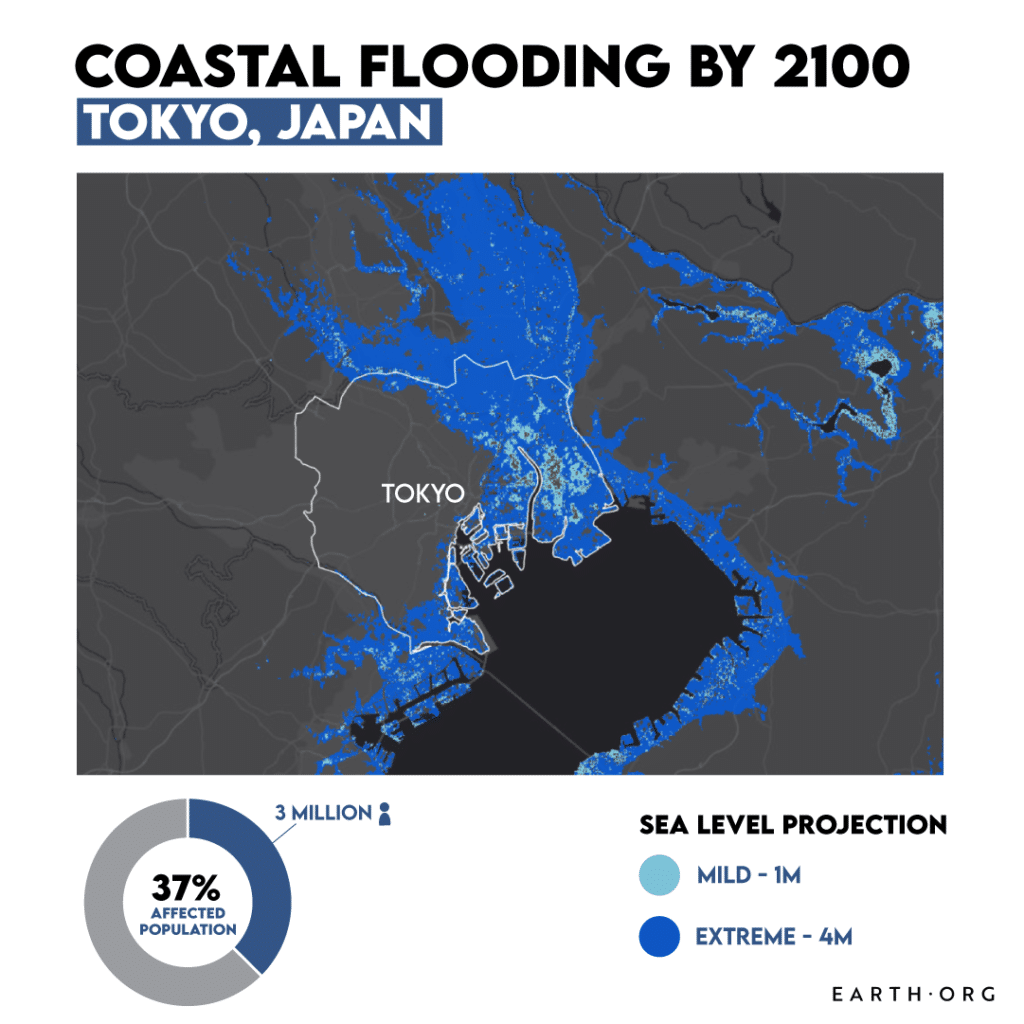Rising sea levels pose a slow, yet ever growing threat to coastal inhabitants, and commercial and leisure activities. A recent study determined a new way to assess the upper limits of sea level rise by the end of the century and it looks worse than previously thought.
Earth.Org takes a closer look.
—
Our planet is warming because of a sharp spike in greenhouse gas concentrations since the Industrial Revolution, over 200 years ago. This has disrupted the 12,000 years of exceptionally benign climate, a period dubbed the Holocene, and precipitated a globally recognized climate emergency.
Gigantic systems like the atmosphere, cryosphere and sea and land surface take a lot of time and energy to shift from equilibrium to sustained loss or gain, and an even longer time to reach a new equilibrium once the initial one is disrupted.
Hence, our forcing of sustained atmospheric warming, oceanic warming and ice melt is committing us to a long-lasting continuation of these phenomena, all of which contribute to sea level rise.
The Intergovernmental Panel on Climate Change (IPCC) regularly produces assessments on the state of our climate, along with our best predictions for the future based on a combination of different climate models. According to these, sea levels are unlikely to rise any higher than 1.1m by 2100, although other studies conclude that ~2m is entirely possible.
The authors of a new paper, “The transient sensitivity of sea level rise”, found that they could do away with scenario-specific biases by looking at the relationship between temperature rise and the resulting change in sea level rise rate, rather than sea level itself. They found a near linear relationship, allowing them to define the “transient sea level sensitivity” as the increase in sea level rise rate with a given amount of warming.
Recalculations of potential sea level rise by 2100 based on this relationship yielded a worrying conclusion: the upper limits of the IPCC’s future projections fall below their new results. They expect a 0.4 to 0.7 m rise in sea levels per degree Celsius of atmospheric warming, although there will be a timela between the temperature and subsequent rise. We stand at 1 degree Celsius today, and have thus locked in 0.4 to 0.7m, but the worst case scenarios for the end of the century reach the 3 or even 4 degree mark – that is a potential 1.6 to 2.8 m rise in sea levels.

Mapping by Braundt Lau, figure by Claudia Cheuk.
To say this would be catastrophic is an understatement, both for the 600 million + living in low-lying coastal areas, and the economies of countries with highly developed coastal infrastructure. Thankfully, we have time yet to steer away from such a pathway, but the takeaway point is that even in a low emission scenario, sea level rise will have a higher impact than expected around the world.
This article was written by Owen Mulhern.
You might also like: The Energy Storage Problem: What is the Battery of the Future?










![The Statistics of Biodiversity Loss [2020 WWF Report]](https://u4d2z7k9.rocketcdn.me/wp-content/uploads/2020/12/lprwinkyTHB-544x306.jpg)





